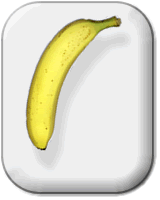.. for your convenience
OK, this is hardly an original post, but one the gazillion attempts to rake together the SEO factors in a simple list. Compiled from
numerous sources around the web and NO it will not offer too many new things. To be used as a simple checklist when building a new website or doing search engine optimalisation on an existing one.
Build validating pages
Make sure the correct html is used and more importantly use the html for the right things. Semantically correct as they say. Use the H1-tag for a header text. Although, search engines can cope with not-validating pages it is advised to use correct markup.
Choose Domain Name
When you own a company with a well known name like Nike or CNN choosing a domain name is easy. But otherwise create a domain name that uses keywords related to your sites main theme. Separate these words in the domain by hyphens rather then
underscores. For example: www.all-condition-clothing.com rather than www.robssuperduperstore.com.
Secure and redirect similar domain names to your theme. Do not, however, provide multiple domains with exact content. This is considered search engine spamming.
For existing sites it is not a good idea to abandon the current domain and start anew with a new optimized name. You will drop from the rank you already had achieved and will have to wait until you appear in a search engine. In this situation it can pay to set up a second site with an optimized name that has slightly altered content that is linking to your primary domain.
Do Keyword Phrase Research
When you want your site to be found you need to find out how people are searching for your site. If your site is about selling "mountainbikes", people might use phrases like "mountainbikes", but also "mountain bikes", "ATB" "offroad bicylces", "terrain bikes " or whatever. Be creative and above all ask other people and study your website logs to see what phrases people use who find your site.
Some tools that can help:
Finally, do consider using typos as well: "moutianbike".
Create Keyword Optimized Pages
From your keyword phrase list, create groups of two to three related keyword. Each group can then become the topic of a page on your website. These can be seen as view points to the products of your website. Getting back to our mountainbikes example you can think of subjects like: "Taking your bike off road", "Mountainbike parts", "Getting your bike out in the terrain ".
A lot of these pages will have largely overlapping content. Be creative and rewrite your content.
The more of these optimized pages you have the better. I would suggest a minimum of 10, better even, try to create at least 25.
Site Structure
A web site has a depth and width. Usually this can be viewed by having a look at the menu structure used fro navigation. The width is the number of options in a menu, the depth is defined by the number of nested menus. Both should not be too big. The depth should be no more than 3 layers. The width should be such that it is still easy to navigate.
This is not really a direct SEO aspect but it improves the overall performance of your site. It will make the site more attractive to users and thus they more likely will link to it. And that is good for your ranking.
Use simple navigation
Make your navigation simple and clean. Every page should have a link to home page. Every page should link to the level above itself. Linking between related pages within your site is also encouraged as it distributes the page rank evenly across your entire site. Finally, remove all broken links from site.
Design fast loading pages
Even in this era where almost all users seem to have a broadband connection it is still good practice to create lean, fast loading pages. Don't use a lot of graphics. Keep image sizes less than 100k. Keep the total page size below 100K. If your pages are longer consider breaking them apart.
Keep a high content to HTML ratio
Your pages should be filled with content and not with loads and loads of HTML tags. Use CSS rather than tables. Use semantic markup.
Keep your content at the top
Format your HTML so that the important content occurs high in the HTML source before other less important content. The related links, ads, banners should preferably appear after the main content in the html. Search engines rate content in the beginning of the pages higher.
Use internal linking
Again link all related pages within your site using properly formatted keyword rich link structure.
Get as many inbound links as you can
Work and work on getting as many inbound links as you can. Get them from related sites with high page rank. The best incoming links will have your keywords in the anchor text as follows:Website design and SEO in Steenwijk. Building links at relevant sites is a lot of work but it pays. It does take some time before the effects are apparent, but be patient: link building does work.
Take a good look at your site statistics
With the arrival of Google Analytics there is hardly any reason to not use site statistics. Enormous amounts of information comes to you for free. Take the time to study these and then take action. Modify and tweak your site to take advantage of traffic patterns. Extend popular parts of your site. Improve poor performing pages.
Update your content regularly
As many already know: it is all about the content of your site. A good visual design is nice, but does not necessarily help you popularize your site. People will not keep coming back just to look at a nice picture. They will return because you have interesting stuff.
Regularly provide fresh, updated content. Depending on the type of your site do this daily (for blogs), weekly or at least monthly. This will keep your site up to date and will give continuous new ways to your content.


























